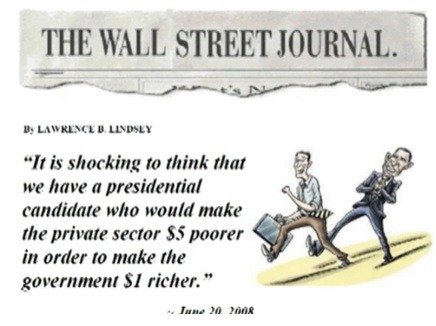Today we are going to look at proposals to expand the burden of Social Security payroll taxes, and let’s start by recycling this 2008 video.
All of the analysis in the video is still accurate, but two of the numbers need to be updated.
- Social Security’s long-run deficit is now $56 trillion rather than $24.9 trillion as was the case back in 2008.
- Social Security payroll taxes now apply to income up to $162K rather than $102K as was the case back in 2008.
If you don’t have time to watch a 9-minute video, I can summarize the issue by noting that Social Security was designed as an “earned benefit,” which means workers contribute to the system in exchange for future benefits. The more you earn, the more you pay, and the more benefits you receive.
But because Social Security is supposed to be akin to an insurance program, there’s a limit on both the amount of benefits any retiree can receive and the amount of taxes that any worker must pay (the same principle applies in many other nations).
Some politicians want to get rid of the limit (the “wage base cap”) on the amount of taxes workers must pay. Instead of applying the 12.4 percent Social Security payroll tax on the first $162,000 of income, they want to impose the tax on all income.
In some cases, they want this big increase in marginal tax rates in order to prop up the Social Security system while in other cases they actually want to expand the program.
In either case, the economic consequences would be very bad.
In today’s Wall Street Journal, Travis Nix explains why this would be counterproductive.
…lawmakers in both parties are mulling the idea of lifting the payroll tax cap. The resulting increase in revenue would do little more than delay the inevitable by extending the program’s life a few more years. …European countries cap payroll taxes at much lower incomes than the U.S. does. Germany caps payroll taxes for health insurance at about $62,000 and the Netherlands caps theirs for social security at $40,370. Uncapping the payroll tax in the U.S. would only widen the disparity and make America a less attractive country in which to work and invest. …Uncapping the payroll tax would raise the top tax rate on Americans’ labor income—income and employee payroll tax combined—to as high as 43.2%. This excludes state taxes and the employer payroll tax, which make the rate even higher. The U.S. hasn’t seen labor tax rates that high since before Ronald Reagan. …European countries that cap their payroll taxes at relatively low incomes understand that you can’t fund a social-safety net without providing an incentive to work. The U.S. should too.
Let’s also look at what Mark Warshawsky of the American Enterprise Institute wrote last year.
…imposing a massive tax increase — 12.4 percentage points — on the earnings of about 10 million highly productive, mostly middle-class workers earning more than $160,200 would have several notable consequences. It would reduce their support for the program, severely discourage their labor market participation, and encourage payroll tax avoidance through converting earnings to incentive stock options and other forms of employee stock ownership. …In many instances, these workers would have their wages taxed at federal, state and local levels at rates exceeding 70 percent. …almost 20 percent of current and future covered workers are projected to earn above the taxable maximum in any one year.
And here is some of Allison Schrager’s analysis from 2020.
When it comes to financing the future of Social Security, many Democrats have a simple and wrong solution: lift the cap on earnings subject to the payroll tax. …there are costs to these plans. A 12.4% marginal tax increase is significant. If the cap is eliminated, an individual who makes $250,000 a year would see their Social Security tax liability increase by 88%. …many households—especially those in states with high state taxes—will be paying more than 60% in federal, state, and local income and payroll taxes… only 6% of the population earns more than the cap. But income varies over people’s lives: 36% of Americans will be in the top 5% of earners at least one year of their career.
I’ll close by observing that it we’ve had big fights under Bush, Obama, Trump, and Biden about whether the top personal income tax rate should go up by about 3 percentage points or down by 3 percentage points.
Since keeping marginal tax rates low helps encourage productive behavior, those were important fights.
Now we face a fight that should be far more important since some politicians want to raise the marginal tax rate by 12.4 percentage points.
It is true that Social Security is in deep financial trouble, but propping up (or expanding) the current system would be bad news for the economy and it would produce a bleaker future for young people.
It would be far better to begin a transition to personal retirement accounts.
P.S. Chile and Australia have created personal retirement accounts. You can also learn about reforms in Switzerland, Hong Kong, Netherlands, the Faroe Islands, Denmark, Israel, and Sweden.
———
Image credit: 401kcalculator.org | CC BY-SA 2.0.






